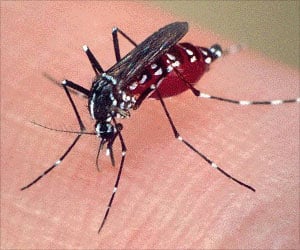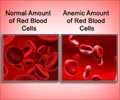A key molecule in Japanese cypress tree leaves called hinokitiol was found to reverse iron deficiency and iron overload.

‘A small molecule found naturally in Japanese cypress tree leaves called hinokitiol can bypass iron disorders.’





New findings reported in Science by a multi-institutional team, including researchers from University of Illinois, Dana-Farber/Boston Children's Cancer and Blood Disorders Center, Brigham and Women's Hospital and Northeastern University, could impact a whole slew of iron disorders, ranging from iron-deficiency anemia to iron-overload liver disease. The team has discovered a small molecule found naturally in Japanese cypress tree leaves, hinokitiol, can bypass iron disorders in animals. Paw, co-senior author on the new Science paper and physician at Dana-Farber/Boston Children's, and members of his lab demonstrated that hinokitiol can successfully reverse iron deficiency and iron overload in zebrafish disease models. As a result, hinokitiol has big therapeutic potential.
Iron Regulation is Essential to Health
Although iron is crucial to many aspects of health, it can't transport itself without the help of the body's iron-transporting proteins. Many human diseases of iron deficiency or overload result from hereditary or acquired loss of the protein function that is responsible ferrying iron across cellular membranes, subcellular compartments and mitochondrial membranes.
"Like most things in life, too much or too little of a good thing is bad for you; the body seeks homeostasis and balance," says Paw.
"Amazingly, we observed in zebrafish that hinokitiol can bind and transport iron inside or out of cell membranes to where it is needed most."
Advertisement
"Red blood cells are the number one type of tissue in the body that need iron, so if iron-transporting proteins are missing, anemia can result," says Paw. "Iron-deficiency anemia is the most common nutritional problem in the world."
Advertisement
A Totally New Approach to Treating Iron-Transport Disorders
"If you're sick because you have too much protein function, in many cases we can do something about it. But if you're sick because you're missing a protein that does an essential function, we struggle to do anything other than treat the symptoms. It's a huge unmet medical need," said the paper's co-senior author Martin Burke, MD, PhD, who led team members from University of Illinois.
Burke's team initially found that hinokitiol could transport iron across cell membranes in vitro before reaching out to Paw and other collaborators to test its efficacy in animal models.
A stain reveals hemoglobin production in a healthy zebrafish (left), an anemic zebrafish (middle) and an anemic zebrafish treated with hinokitiol (right).
Paw and collaborators observed that hinokitiol molecules can bind to iron atoms and move them across cell membranes and into/out of mitochondria, despite an absence of the native proteins that would usually carry out these functions.
"If there is a genetic error, cell membranes won't open for iron to come across," says Paw. "But when you administer hinokitiol, it combines with iron and ferries it into, within or out of the cells and mitochondria where iron is needed.
"Therefore, it's a very interesting small molecule that has a lot of therapeutic potential!" Paw concludes.
Source-Eurekalert














